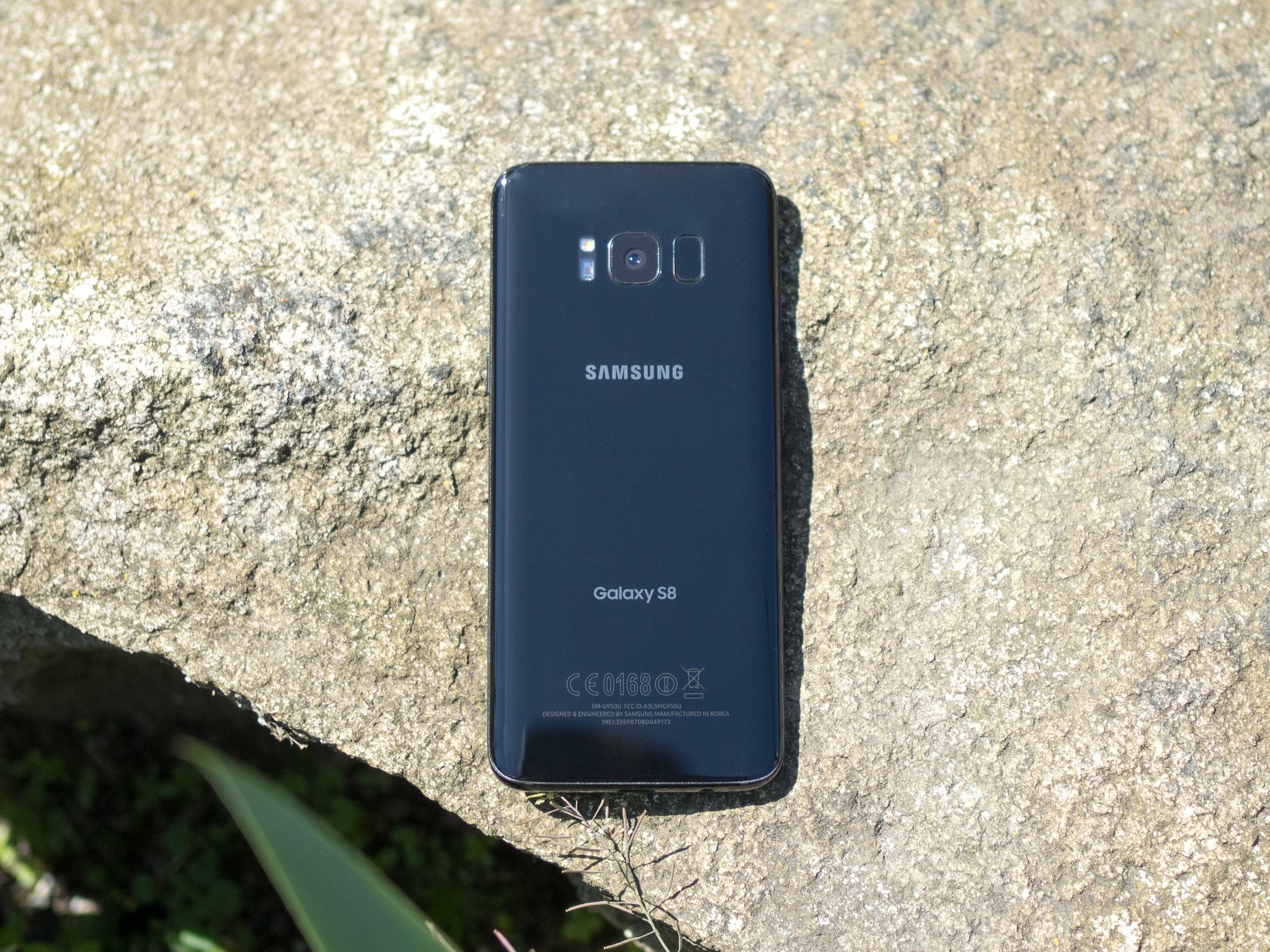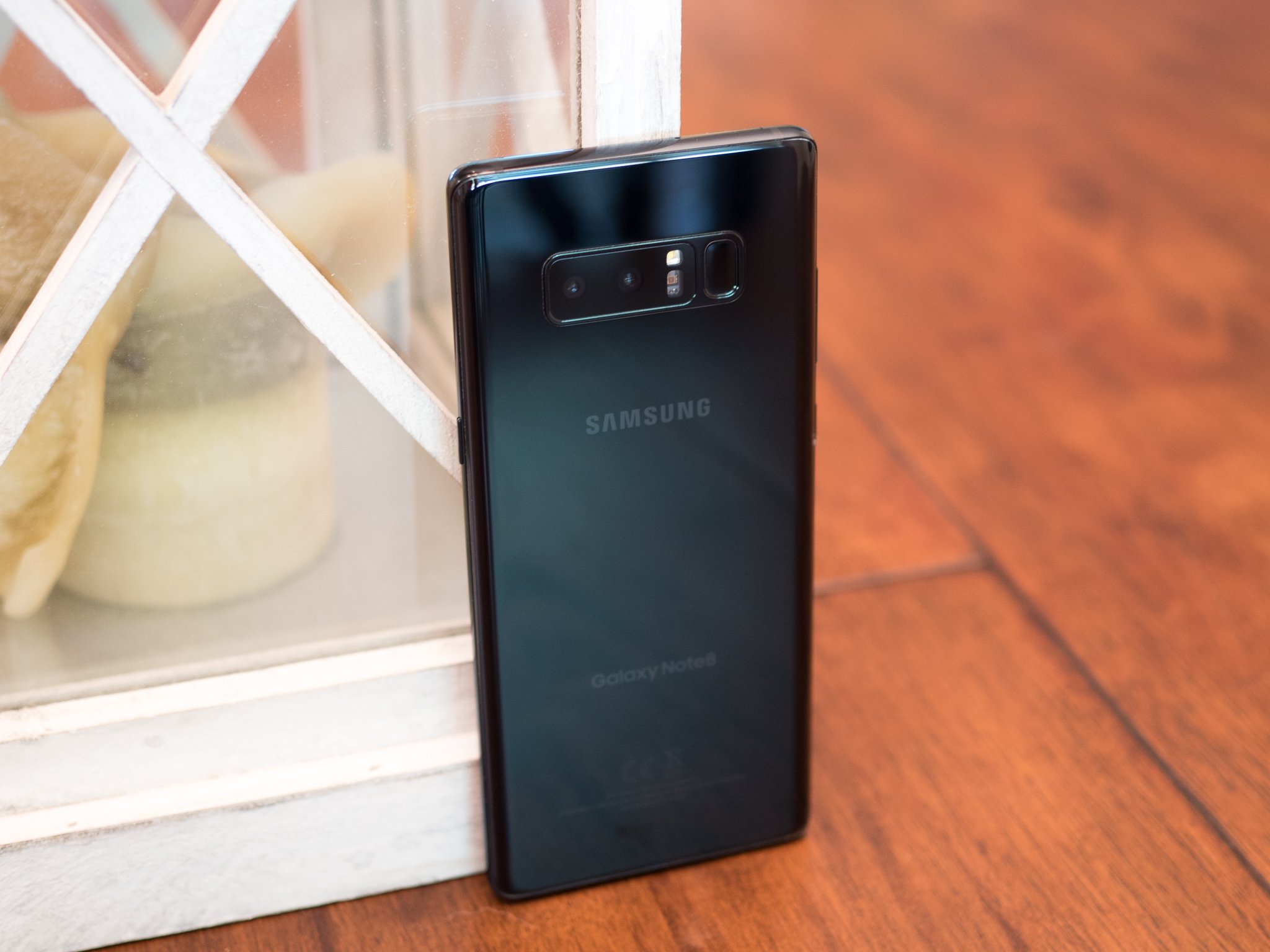Best overall
Google Pixel 2
See at Verizon See at Best Buy See at Google Store
Google's new Pixel 2 gives you sleek and solid hardware, all of the requisite specs inside and runs simple and intuitive software at a breakneck pace. The hardware surely isn't flashy, but it's beautiful and efficient — and it's now IP67 water-resistant like we expect.
The software features and Google's apps aren't numerous, but they're delightfully useful without being bothersome. And with three years of guaranteed updates, you don't have to worry about the future.
The Pixel 2 has once again set the standard for Android cameras as well, with Google's "HDR+" processing buoyed by new camera hardware and even better processing. Photos are accurate with just a little extra punch of color, and can manage tough scenes with little issue. And with Android 8.1, a new "Pixel Visual Core" chipset will be enabled to give you even better photos, which is tantalizing.
Bottom line: The best Android experience comes straight from Google with the Pixel 2. Great hardware and amazing software support an amazing camera that's only getting better.
One more thing: For a larger (but arguably worse) screen and bigger battery, pony up an extra $200 for the Google Pixel 2 XL. The rest of the experience remains unchanged.
Why the Google Pixel 2 is the best
If you want the best possible Android experience, you go straight to the source: Google. The company has gotten serious about user experience and interface design, and it really shows with Android 8.0 Oreo on the Pixel 2 and 2 XL. Everything is blazing fast, smooth, consistent and intuitive throughout the interface. It's a core competency that separates the Pixel 2 from the competition, and it's something that any smartphone user can appreciate.
Google has gotten really good at user experience and interface design.
And it's not just software customization that makes it happen — Google has included a Snapdragon 835, 4GB of RAM and 64GB (optionally, 128GB) of storage to make sure your phone has plenty of room to run. A 2700mAh battery seems small (well, normally, it is), but it manages to get you a full day of use without worry. The little body also packs front-facing stereo speakers, which are a rarity in 2017. Further to that point, Google has sourced a quality 5-inch 1080p panel that looks good at the $649 price point.
Oh, yes, it's just 5 inches. Despite its big top and bottom bezels, the Pixel 2 is quite comfortable to hold and reach to all four corners of the screen without the help of a second hand. The Pixel 2 XL's 6-inch display makes it a match-up for the Galaxy S8+ in terms of size — and in more awkward one-handed use. (It also has an arguably worse display, despite being a QHD+ resolution OLED screen.)
The Pixel 2 doesn't focus on the number of features, it focuses on the impact of each one.
If there's one knock on the Pixel 2, it's that it doesn't have the sheer volume of features in its hardware or software that some of the competition does. It doesn't have a headphone jack, wireless charging or an SD card slot; and if you're used to having a bunch of specialized software features on your Samsung, LG or Huawei phone you won't find them here.
But for most people, those are relatively small prices to pay to get a daily experience of using a phone that's fast, intuitive, smart and filled with a core set of features that can actually wow you. That's what you get from the Pixel 2.
Best for features
Samsung Galaxy S8
See at Verizon See at AT&T See at T-Mobile See at Sprint See at Best Buy
The Galaxy S8 has slick hardware with tiny bezels that let it have a big screen in a small body, but inside it still offers everything you want: a high-end processor, lots of storage, an SD card slot, full waterproofing and a top-end camera.
Though its software can be a little overwhelming, you can't argue that Samsung continues to pack in hundreds of features to a single phone, making sure there's something in here for everyone's needs. Samsung continues to take this approach of offering more more more with just a few compromises — and it continues to work.
Bottom line: The Galaxy S8 gives you piles of features in a beautiful body, and is a great choice for a wide range of potential buyers.
One more thing: You should consider the option of paying a little extra and get the larger Galaxy S8+ for a bit more screen and battery life.
Best with a huge screen
Samsung Galaxy Note 8
See at Verizon See at AT&T See at T-Mobile See at Sprint See at Best Buy See at Amazon
Take everything that makes the Galaxy S8 great, and scale it up — that's what also makes the Galaxy Note 8 compelling. A very familiar glass-and-metal body is wrapped around a larger 6.3-inch display, but a panel that's even better in terms of brightness and colors.
For this top-dollar phone you'll find top-end specs, great performance and super-capable software. Plus a new dual camera setup that offers you 2X zooming without losing resolution and a new "Live Focus" mode that mimics the background blur of a professional camera. None of the camera changes come at a cost of reduced primary camera quality, either.
Then you get the S Pen, of course, offering fine input, drawing abilities and new productivity tricks you simply can't get from any other phone out there. The stylus isn't for everyone, but you'll find plenty of people who swear by its capabilities.
Bottom line: For the biggest, most powerful and most capable phone Samsung makes, look no further.
One more thing: Be ready to spend the big bucks — the Note 8 is far and away Samsung's most expensive phone ever at nearly $1000.
Best mainstream alternative
LG V30
See at AT&T See at Verizon See at Sprint See at T-Mobile
LG's V series has traditionally been a big and brawny phone, but in 2017 the V30 is just a great overall device that has handily taken over from the G6 launched earlier this year. It stuck with a metal-and-glass build, but slimmed down the sides and integrated subtle curves to make it rather easy to hold despite a 6-inch 18:9 display on the front.
Internally you get top-notch specs you'd expect from any flagship, and around back LG continues to impress with a fantastic pair of cameras. The standard shooter does really well despite its small pixels, and the secondary wide-angle camera is the best implementation LG has ever made. It offers an extremely unique perspective you just don't see anywhere else.
LG's software is capable and smooth, if still a bit clunky and uncoordinated in a few areas — but that can still be said about most phones nowadays.
Bottom line: LG does all of the basics amazingly well, and accents it with a nice body and super-capable pair of cameras.
One more thing: The V30 isn't yet widely available in Western markets, but we expect it to hit store shelves early in October.
Best for keyboard
BlackBerry KEYone
See at Amazon See at BlackBerry
The market for phones with a physical keyboard may not be as large as it once was, but BlackBerry Mobile's KEYone has reinvigorated the market. Not only does it offer a best-in-class efficiency through its ample 3505mAh battery and power-sipping Snapdragon 625 chip, but its keyboard feels like it's straight out of the old BlackBerry Bold — in a good way.
Bottom line: BlackBerry is back with a phone that feels just as comfortable in the Android world as it did in the BB10 world.
One more thing: The KEYone has a pretty great camera that's underappreciated in the marketplace.
Conclusion
The Pixel 2 doesn't have as many features as some other phones, but the entire experience of using the phone, from top to bottom, is ahead of the competition. Just about anyone can appreciate what Google offers in this phone, or its larger sibling the Pixel 2 XL.
Best overall
Google Pixel 2
See at Verizon See at Best Buy See at Google Store
Google's new Pixel 2 gives you sleek and solid hardware, all of the requisite specs inside and runs simple and intuitive software at a breakneck pace. The hardware surely isn't flashy, but it's beautiful and efficient — and it's now IP67 water-resistant like we expect.
The software features and Google's apps aren't numerous, but they're delightfully useful without being bothersome. And with three years of guaranteed updates, you don't have to worry about the future.
The Pixel 2 has once again set the standard for Android cameras as well, with Google's "HDR+" processing buoyed by new camera hardware and even better processing. Photos are accurate with just a little extra punch of color, and can manage tough scenes with little issue. And with Android 8.1, a new "Pixel Visual Core" chipset will be enabled to give you even better photos, which is tantalizing.
Bottom line: The best Android experience comes straight from Google with the Pixel 2. Great hardware and amazing software support an amazing camera that's only getting better.
One more thing: For a larger (but arguably worse) screen and bigger battery, pony up an extra $200 for the Google Pixel 2 XL. The rest of the experience remains unchanged.
Update, October 2017: The Google Pixel 2 (and 2 XL) has taken our top spot, pushing the Galaxy S8 (and S8+) down one slot to the best phone for those who want tons of features. The U11 has made way, as its "simplicity" claim on the list has been supplanted by the Pixel 2 as well.




0 Response to "You Can See More: Best Android Phones of 2017"
Post a Comment